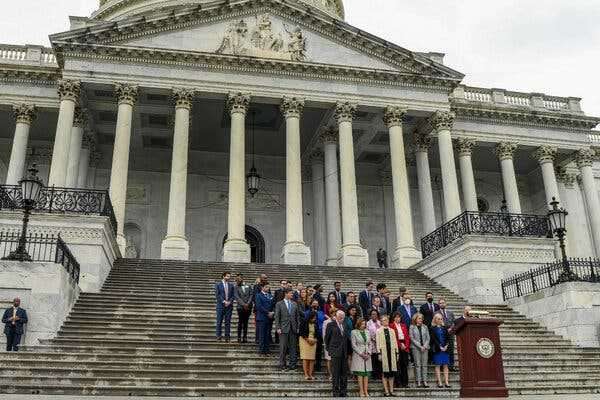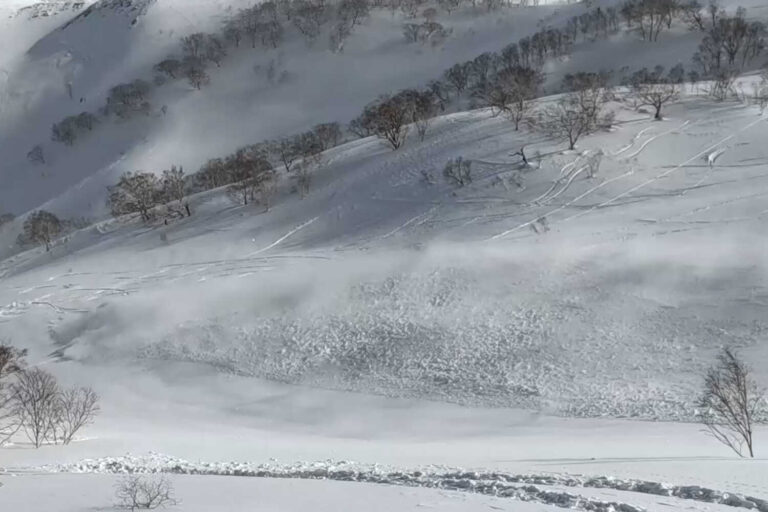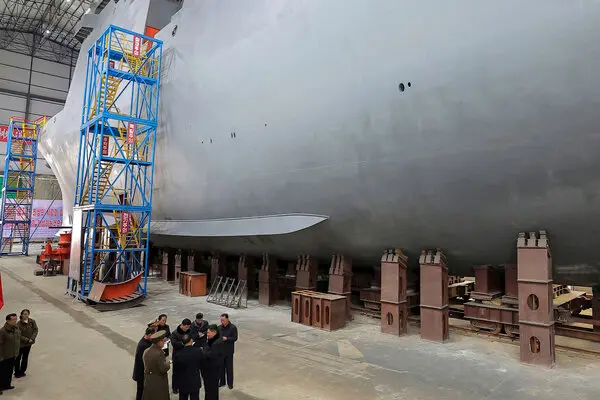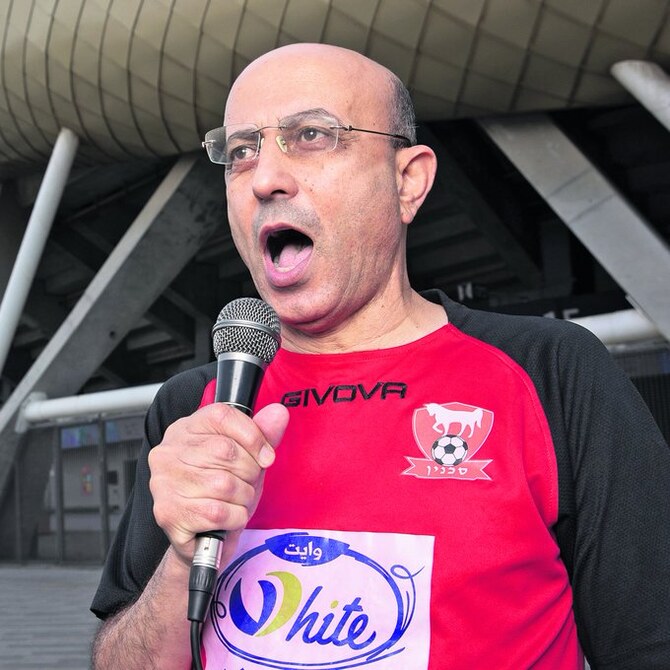
May 20, 2022, 8:40 a.m. ETMay 20, 2022, 8:40 a.m. ET
Chris Cameron

Members of Congress recently observed a moment of silence on the steps of the Capitol for American lives lost to Covid.
Minutes before a crowd of lawmakers gathered on the steps of the Capitol last week to mark the impending U.S. death toll of 1 million from Covid, it began to rain.
The shower ended by the time that House Speaker Nancy Pelosi and other members of Congress walked down from the building, but the slate gray sky — and an American flag waving at half-staff above them — set the somber tone of the event.
“Behind each number is a name of a person, beloved,” Bishop Mariann Edgar Budde, the leader of Washington’s Episcopal diocese, said in prayer. “Far too many taken, much too soon, and sometimes alone.”
Minutes later, after a musical performance by the Air Force chorus and a moment of silence for Covid victims, the lawmakers began filtering back into the Capitol. There were no other prepared remarks. The moment had passed.
Over the course of the pandemic, there have been a number of vigils, moments of silence and temporary installations in the United States honoring the victims of the coronavirus. But as the country crossed the million-death-milestone on Thursday, there was no national, permanent memorial to America’s loss. Some of the survivors have called for more to be done.
Kristin Urquiza, who turned to activism after her father died from Covid in June 2020, said recently that a permanent national memorial to the pandemic is essential, and that there is a “need for us as a country to have our president set the tone, bring us together as a nation to really commemorate this moment.”
“A million people is quite profound,” Ms. Urquiza, a co-founder of the advocacy group Marked by Covid, said, adding that “the gestures are not fitting to scale.”
ImageAn installation in September 2021 blanketed the National Mall in Washington with more than 660,000 white flags, honoring lives lost to the coronavirus in the United States up to that time. Credit…Kenny Holston for The New York Times
Perhaps the most prominent effort to date has been a vast sea of white flags planted on the National Mall for two weeks in September, easily visible from the White House, symbolizing the more than 670,000 people in the United States who had died of Covid by then — roughly the same as the entire toll of the 1918 flu pandemic, which also has no national memorial.
The Biden administration and members of Congress have said that with the pandemic far from over, their focus is on preventing more deaths, but even accomplishing that has its own challenges. The administration’s request for a $22.5 billion aid package to fund vaccines, therapeutics and other treatments has been whittled down to less than half its original size because of a Republican demand that it is paid for by clawing back previously approved funds. And that $10 billion package remains stalled over a push to include language in the bill that maintains immigration restrictions at the country’s land borders.
“We’re still in a fight against Covid and a battle against Covid,” Jen Psaki, the White House press secretary at the time, said at a news conference last week. “There are still far too many people getting sick, getting hospitalized and dying. And this is not the last time we will commemorate or the last step that the president will take to commemorate.”
That day Mr. Biden had issued a proclamation ordering U.S. flags at the White House and all public buildings to be flown at half-staff for multiple days to commemorate one million Americans dying of Covid.
“As a nation, we must not grow numb to such sorrow. To heal, we must remember,” he said. “We must remain vigilant against this pandemic and do everything we can to save as many lives as possible.”
Temporary public Covid-19 memorials in (clockwise from top left) Montana; Washington, D.C.; Illinois; Nevada; and New York. Photos by Mike Clark/The Billings Gazette, via AP; Alex Brandon/AP; Justin L. Fowler/The State Journal-Register, via AP; John Locher/AP; Spencer Platt/Getty Images.
Asked after the vigil whether Congress would establish a permanent national memorial to victims of Covid, Ms. Pelosi said only: “Right now, we’re just trying to save lives.”
The remarks were the latest sign of how Washington is trying to balance a return to prepandemic normalcy while urging Americans to stay vigilant against the virus.
“We need to be able to respond to the situation that we’re in and not the situation that we wish we were in, and be able to walk and chew gum at the same time,” Ms. Urquiza said referring to the Biden administration’s Covid response. “We need to hold space for people who are experiencing grief and loss as well.”
Biden has made previous efforts to pay tribute to Covid victims. The night before his inauguration, he led a national mourning at Washington’s Reflecting Pool for the 400,000 Americans who had been killed by the virus. A month later, when the toll had reached half a million, he held a moment of silence on the South Lawn of the White House.
Although Marked By Covid has identified more than 70 local memorials, vigils and art installations marking the pandemic in the United States, all but a few have been temporary.
Art installations memorializing victims of the coronavirus in California and New Jersey. Photos by (clockwise from left) Richard Vogel/AP; Seth Wenig/AP; Isadora Kosofsky for The New York Times.
The Baltimore County government in Maryland has planned a permanent public art memorial, scheduled to be installed in the fall. Delaware unveiled a memorial tree and plaque earlier this month for families to fill in the names of loved ones who have died. New York City established a permanent memorial last year honoring the first known city sanitation worker who died of Covid in April 2020. Hundreds of New Yorkers died a day that spring during the first devastating wave.
And in Wall, N.J., another permanent memorial, Rami’s Heart, displays stones engraved with the names of victims and bearing messages from loved ones.
Source: nytimes.com



